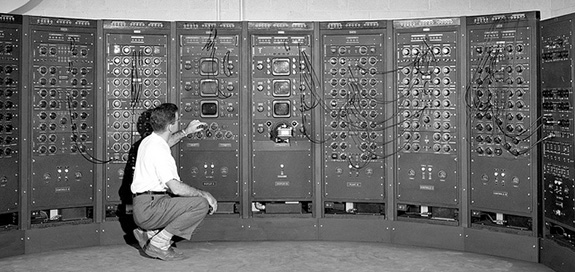With all the technology that is changing how salespeople sell and manage themselves, I was surprised by the comments made by people I’ve spoken to about the topic.
 A few observations I heard that certainly stirred up quite a reaction in me:
A few observations I heard that certainly stirred up quite a reaction in me:
- Cold calling is dead.
- Technology is going to replace the salesperson.
- Companies are going to rely less and less on the high caliber, professional salesperson who can take a prospect from the beginning of the sales cycle to the end when closing the sale.
- Automated, asynchronous training solutions are going to replace training and professional development delivered by a live person (face to face, over the phone or through the internet.)
Sure, technology will automate and streamline many of the functions and tasks salespeople and management are currently responsible for. More specifically, how they manage their sales pipeline and the stages of their selling cycle, how they qualify and mine for new prospects, how they network with other business professionals, how they maintain their contact database as well as how they communicate with their prospects and customers. The trend for companies to transition from what was once a face to face sale to a virtual, off site sale will continue to dominate more sales cultures.
Interaction and Misinterpretation
As a pioneer in sales coaching and professional development, one thing is for certain. People like to buy from people. As such, the longer your sales cycle and the higher the price tag on your product or service, the more solidified the need will be and will remain for talented sales champions to drive sales and growth.
I have already seen the negative impact that some of these great advancements are having on sales teams across the globe as it relates to how salespeople are interacting with their prospects, customers even their managers. Many managers have reported spending far too much time reviewing a thread of email conversations between their salespeople and prospects when attempting to uncover where a communication breakdown occurred or when trying to identify how a great selling opportunity was lost. Misinterpreted and poorly worded emails between management and their staff are the cause of more costly problems and upsets which deteriorate relations than any additional time-savings they supposedly create.
Moreover, there’s the ever-widening communication gap that some of these new technologies promote between the younger, Facebook generation and that of their boss, especially as more and more sales teams are built on a virtual platform where there’s little, if any face to face weekly interaction with their manager. Rather than develop their core leadership and coaching competencies and skills, managers are relying far too heavily on these solutions to solve many of the managerial challenges they are up against when building and managing their sales team.
Change is Constant
Salespeople are expecting their webinars, proposals, websites, online marketing campaigns and collateral materials to do the selling and prospecting for them. And what’s worse, there are those salespeople who attempt to close a prospect or overcome objections via email rather than simply picking up the phone to facilitate a direct, one to one conversation that would appease the person’s concerns. Here’s just one example of a perfectly good opportunity and a valid reason to reach out to a prospect over the phone that salespeople need to take full advantage of, yet fail to do so.
The introduction of these new technologies into the selling process will continue to proliferate, for change is truly the only constant. After all, there will always be a need to make the selling process easier and more efficient for the salesperson, for your company and for your customers.
While more applications such as the ones I’ve mentioned are infused throughout each stage of the sale, the technology of maximizing human potential is far from tapped. And as more technology emerges to simplify the selling process, there will be an even greater demand for the elite salesperson who can manage and leverage technology as well as effectively communicate their message to their targeted audience.
The technology of interpersonal, result oriented communication; the language and true art of selling will still reign supreme in the selling profession. Sure, these new tools we have at our disposal will improve efficiency, cut down on travel as well as timely administrative tasks, and reduce prospecting time and the time it takes to convert prospects into customers, now that there is less of a need to meet face to face with prospects in order to sell your product or service to them. However, it will be the sales leader who is the rainmaker, the fearless and persistent prospector, the conduit to building and maintaining strong relationships and the master of the language of selling who will continue to dominate this era of technological change.
Photo credit: James Vaughan



